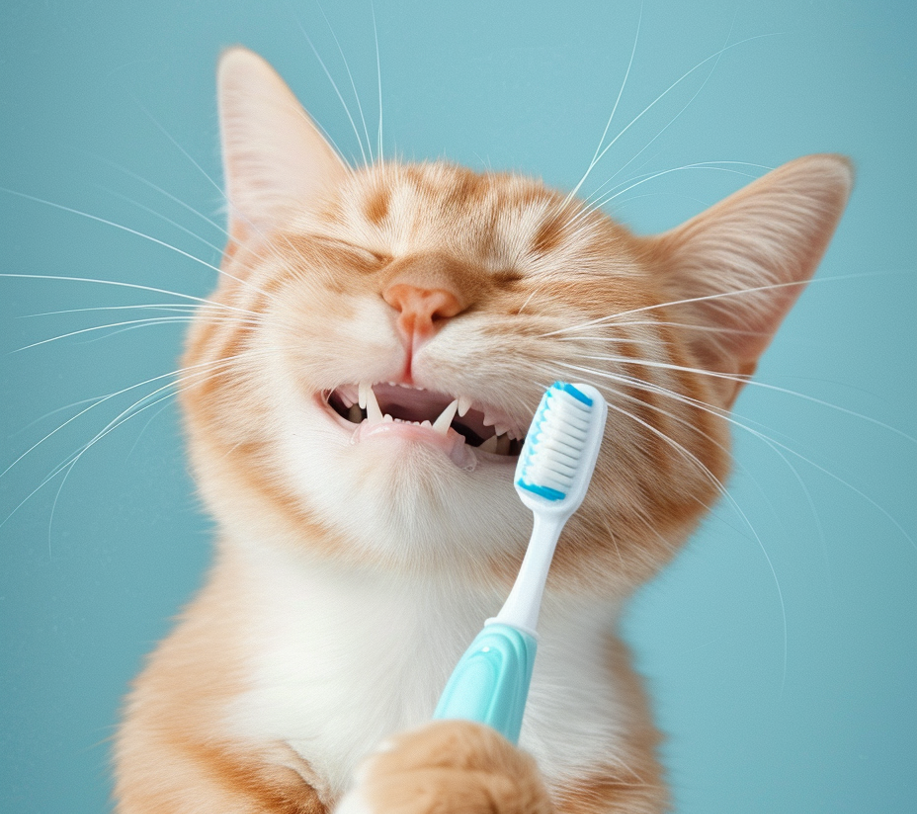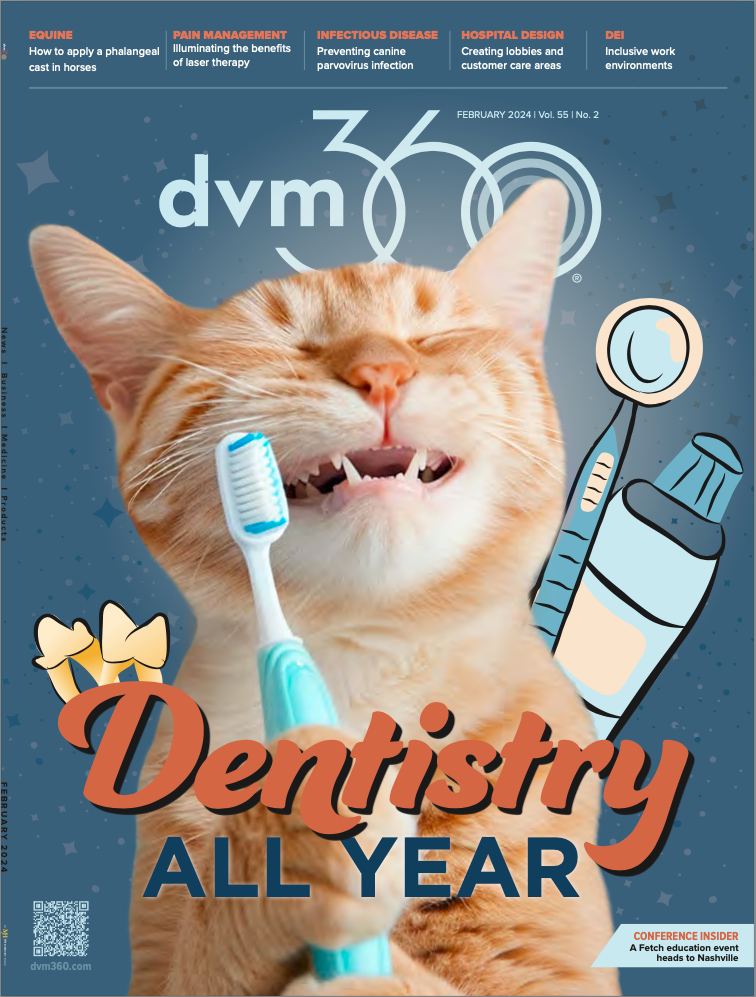It’s “tooth-thirty.” Do you know where your instruments are?
Celebrate National Pet Dental Health Month with our chief veterinary officer, Adam Christman, DVM, MBA
Time to stock up on extra polish, rinses, and drill bits. National Pet Dental Health Month is in full effect.
Veterinary medicine continually evolves, and one critical area of focus remains the management of periodontal disease in dogs and cats.1 Understanding recent advancements in this field is essential for veterinary professionals to provide optimal care for their patients.

Periodontal disease in our patients encompasses various conditions, including gingivitis and periodontitis, that affect the supporting structures of the teeth.2 The disease's prevalence remains high, with estimates suggesting that a majority of dogs and cats over the age of 3 years suffer from some form of dental pathology.3
Recent research has emphasized the multifactorial nature of periodontal disease, underscoring the roles of genetics, diet, oral microbiome, and immune response in its development. These factors contribute to the initiation and progression of periodontal pathology, influencing the severity and rate of disease advancement. You probably are hearing about the role the gut and oral microbiome play in managing healthy teeth and gums in our patients. One study from the Journal of Animal Science showed how certain dental chews positively shift the dental microbiota in adult dogs.
Advancements in diagnostic techniques have played a pivotal role in early detection and effective management of periodontal disease. Veterinarians now have access to improved imaging modalities, such as digital dental radiography and cone-beam computed tomography, enabling a precise evaluation of dental structures and facilitating early intervention. Dental radiography should be an integral part of all dental procedures to properly identify pathology below the gum surface.
Furthermore, a deeper understanding of the oral microbiome has led to novel approaches in periodontal disease management. Research suggests that dysbiosis, an imbalance in the oral microbiota, is associated with periodontal disease progression. Emerging studies explore probiotics, prebiotics, and targeted antimicrobial therapies aimed at modulating the oral microbiome to restore balance and mitigate periodontal disease.
Treatment protocols have also evolved, emphasizing a multimodal approach that combines dental prophylaxes with home-care strategies, keeping the spectrum of care top of mind. Understanding not all pet owners can brush their pet’s teeth is crucial in identifying effective strategies that may work best for their pets. Veterinary Oral Health Council–approved dental chews, water additives, probiotics, and therapeutic diets can assist in maintaining a healthy oral cavity after a dental cleaning.
Client education remains a cornerstone in the prevention and management of periodontal disease. Veterinarians play a pivotal role in educating pet owners about proper dental care, emphasizing the importance of regular dental examinations, home dental care routines, and the impact of diet on oral health. Capturing the dental cleaning process for the patient via video capture has been instrumental in educating clients about the importance of a safe dental cleaning procedure. Utilizing social media to showcase educational content related to dental disease is very popular with followers and pet owners. Taking before-and-after pictures of dental cleanings speaks volumes about the power of veterinary dentistry.
Despite these advancements, challenges persist in combating periodontal disease comprehensively. Client hesitation in having their pets placed under general anesthesia is a concern. Combatting nonanesthetic dental cleanings that are seen on social media is another obstacle many veterinarians face when clients ask about them. Again, client education and empowerment are crucial for compliance and adherence.
Ongoing advancements in veterinary dentistry have reshaped the understanding and management of periodontal disease in dogs and cats. By embracing a multifaceted approach encompassing diagnostics, treatment modalities, dietary interventions, and client education, veterinarians can significantly enhance the oral health and overall well-being of patients. Healthy pets equal happy vets!
References
- Gorrel C. Veterinary Dentistry for the General Practitioner. 2nd edition. Elsevier Health Sciences; 2013.
- Niemiec BA. Small Animal Dental, Oral, and Maxillofacial Disease: A Color Handbook. 2nd edition. CRC Press; 2011.
- Harvey C, Serfilippi L, Barnvos D. Effect of frequency of brushing teeth on plaque and calculus accumulation, and gingivitis in dogs. J Vet Dent. 2015;32(1):16-21. doi:10.1177/089875641503200102
- Oba PM, Carroll MQ, Alexander C, et al. Dental chews positively shift the oral microbiota of adult dogs. J Anim Sci. 2021;99(7):skab100. doi:10.1093/jas/skab100
